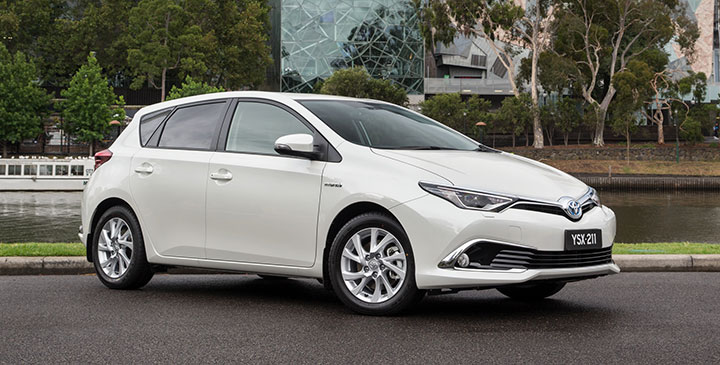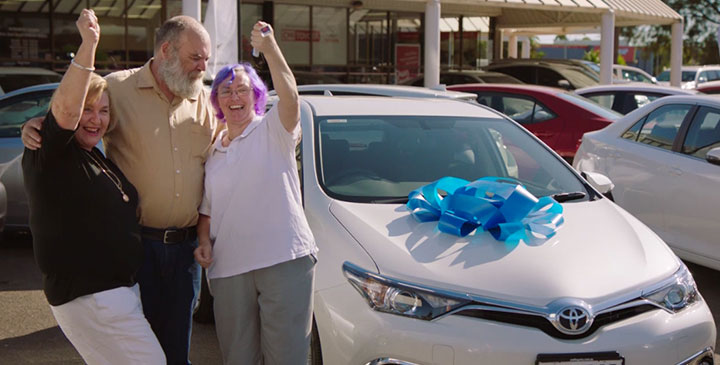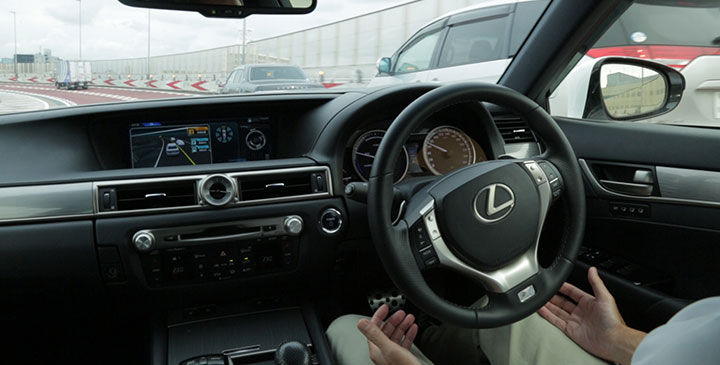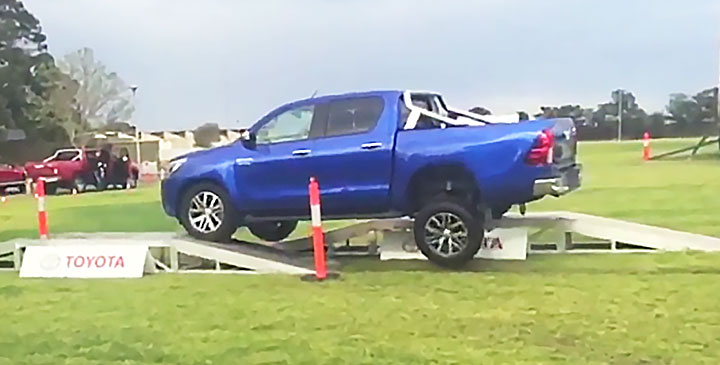Toyota’s lucky streak: 13 years as top-selling brand
Toyota was the number one brand in every state and territory as the local automotive industry outperformed general economic conditions to achieve an all-time high of 1.155 million new-vehicle registrations.
Corolla’s hat-trick along with record sales for Toyota SUVs and best-selling status for its vehicles in nine categories were instrumental in Toyota lifting sales by 1.3 per cent to 206,236 new vehicles.
Toyota dealers sold an industry-high average of 565 vehicles every day in 2015, delivering more passenger cars, more SUVs and more light-commercial vehicles than any of their rivals.
It was the fourth year in a row and the 11th time in the past 12 years that Toyota sales have exceeded 200,000 vehicles – and it is the only company to have reached that number. Toyota has now been market leader for a total of 19 years.
A Toyota badge featured on three of the national top 10 sellers - Corolla, HiLux and Camry - after a hectic year in which the market leader refreshed or replaced models accounting for 70 per cent of its volume.
Toyota finished the year on a high, setting a new December record with 21,217 sales, more than 2,300 vehicles ahead of the combined totals of its nearest two rivals.
Camry was the national best-seller for the month, posting its best-ever four-cylinder sales of 5,321 sedans.
Toyota’s executive director sales and marketing Tony Cramb said the company and its dealers planned to use the 2015 results as a springboard to expand sales through enhanced customer satisfaction.
“The next 12 months will provide the full-year benefits of 13 new or refreshed models that arrived in 2015, delivering on our promise to continue offering ever-better cars,” Mr Cramb said.
“Equally as important, we will continue to implement a cultural shift throughout our company and dealer network, focused on ensuring owners and prospects are treated as valued guests of the Toyota family,” he said.
“We deeply appreciate the high degree of loyalty to Toyota shown by a significant proportion of the Australian population – and we are determined to establish industry-leading standards in every aspect of those relationships.”
Toyota vehicles in 2015 were the best sellers in three passenger-car segments: Corolla (small), Camry (medium) and 86 (sports).In SUVs, the Toyota segment leaders were LandCruiser Prado (large) and LandCruiser wagon (upper-large). The light-commercial market featured Toyota’s HiLux (4x2 and 4x4) and HiAce (van and bus) as the best sellers.
Toyota brings hybrid performance to Corolla

The new hybrid car is expected to use around one-third less fuel* while producing similar power to the already efficient petrol-only Corolla hatch with its Multidrive S automatic transmission.
Corolla Hybrid will be introduced as a well-specified single grade, expanding the local company’s Hybrid Synergy Drive offerings to a fifth model following Prius, Prius c, Prius v and Camry.
Premium features will include satellite navigation# , Toyota Link connected mobility^ , dual-zone automatic air-conditioning and bi-LED headlamps.
Toyota Australia’s executive director sales and marketing Tony Cramb said the company’s full hybrid technology is established as a mainstream powertrain choice.
"“The combination of Toyota's hybrid technology and Australia's best-selling car gives us a unique opportunity to broaden the market appeal of both,” Mr Cramb said.
“Corolla Hybrid will offer all the advantages of Australia’s favourite car, coupled with the hybrid system’s established performance, reliability, durability and exceptionally low running costs.”
The Corolla Hybrid will be fitted with a Euro 5 compliant 73kW 1.8-litre petrol engine mated to a 60kW electric motor and driven through a continuously variable automatic transmission.
Combined system output of 100kW is achieved with almost Prius-like fuel economy while generating virtually zero oxides of nitrogen (NOx) or particulate matter emissions.
A selectable electric-vehicle mode will enable the Corolla Hybrid to be driven for up to two kilometres at speeds of up to around 45km/h with zero tailpipe emissions, depending on the level of battery charge and driving conditions.
Corolla, which is now in its 50th year in the Australian market, has been the best-selling car for each of the past three years with a 103kW petrol engine available in sedan and hatch body styles.
Stay tuned for more information.
*Fuel consumption and emissions will vary depending on driving conditions/style, vehicle conditions and options/ accessories. Source of fuel consumption data: ADR 81/02.
#Current navigation mapping database encompasses major capital and primary national road networks and offers some coverage in regional areas.
^Toyota Link services rely on data from the driver’s compatible mobile phone and information provided by third parties. Availability is dependent on a number of factors, including the availability of third party information, mobile service, sufficient mobile data allowance and GPS satellite signal reception. Mobile usage is at the user’s cost. Toyota Australia reserves the right to add, remove or modify applications. Further information is provided at Toyotalink
Toyota and NAB give one lucky person a life-changing gift

Good Shepherd Microfinance offer StepUp loans and financial programs to people on low incomes. These programs are driven by human dignity, respect and compassion for disadvantaged and marginalised members of the community.
Always a supporter of community initiatives, Toyota wanted to help. Through their partnership with NAB, a competition was organised at the end of last year to give one loan applicant an unforgettable prize – a brand new Corolla Ascent Sport from Toyota, with NAB paying off the winner’s loan in full, along with three years of car insurance and a $500 fuel voucher. To be eligible, entrants just had to answer one question – ‘What would a new car mean to you?’
For Peter and Fiona Bleggs, taking home a new car meant more than you would think. Having suffered from MS for many years, Fiona found the stiff steering of their old car made her condition worse. A new car would make life a lot easier.
When applying for a StepUp loan to pay for car repairs, the couple were offered competition entry at the same time. Two days later, their car was tragically written off in an accident. Which is why they were surprised, relieved and ecstatic all at once when they received a phone call not long after, telling them they had won.
The couple picked up their brand new Toyota Corolla Ascent Sport from the CMI Southside dealership in South Australia, and ever since, Fiona has enjoyed major improvements to her mobility.
To learn more about Peter and Fiona’s story, watch this clip
Autonomous cars – the future is here

A society in which vehicles drive themselves and never crash sounds like fantasy, but it’s no longer science fiction. We are now on the cusp of making the once-futuristic concept of autonomous driving a reality.
Google already has a prototype car with no steering wheel, brake pedal or accelerator while global carmakers such as Toyota are advanced in their plans to offer hands-free driving. A modified Lexus GS (pictured) is fitted with equipment that enables automated driving on highways from the on-ramp all the way through to the off-ramp. It uses on-board technology to evaluate traffic conditions, make decisions and take actions. This includes merging onto or exiting highways, maintaining or changing lanes, and maintaining appropriate gaps between vehicles. Vehicles with these abilities are expected to be on sale before 2020.
Three types of artificial intelligence will be critical to the success of this brave new world: advanced recognition and predictive decision-making functions; vehicle-to-vehicle and vehicle-to-infrastructure communication; and technology for involving passengers including the transfer of control between driver and vehicle.
Advocates of autonomous cars cite compelling advantages: saving lives and money by eliminating human error, easing congestion and shortening commuting times and greater access to mobility for everyone – including seniors, the disabled and visually impaired.
There are other sound economic factors. Highways are more conducive to automation than urban routes; therefore, owners of truck and car fleets that drive long distances between major cities in Australia are likely to find themselves prime candidates for early adoption of this technology. The cost of vehicle ownership could also reduce. New technologies become cheaper through wider use while cars may no longer require the expense and weight of features such as airbags, bumpers and crumple zones – making them cheaper, lighter, more fuel efficient and perhaps even longer-lasting. Insurance coverage may shift from a focus on the occupant to covering the liability related to technical failure of the automated vehicles.
One of the biggest challenges will be the transition period – how to manage a period of years where conventional and automated vehicles are sharing the same road. A first step is likely to be dedicated lanes or highways.
Of course, whether a vehicle is owned privately, operated through a novated lease or supplied by their employer, it is often much more than a means of getting from A to B. It provides autonomy; it’s an expression of the driver’s personality; and many people value the fun experience of driving itself. The most successful carmakers of the future, therefore, will be those that can provide all the positive benefits of advanced technology while still capturing the public’s imagination.
HiLux gets thumbs up from Bates Advanced Driving

Seen a locally made car commercial on TV lately? Chances are, it’s Rick Bates of Bates Advanced Driving behind the wheel. With a distinguished career in rallying and circuit racing behind him, Rick is often the go-to guy for industry professionals or amateurs to improve their skills.
In addition to TV work, his company, Bates Advanced Driving runs a training centre in Queanbeyan in NSW, offering defensive driving and skidpan training designed to improve the skills of any driver.
With driving his passion – and his livelihood – Rick needs a vehicle that can stay the course. Which is why he relies on Toyota HiLux.
“I use it for a workhorse, towing equipment to events and setting up,” he says. “I have two trailers weighing in at 3.5 tonne each, so the 3.5 tonne towing capacity is incredibly useful.
“I also use it to set up courses, for demonstrations, and as a defensive driving course vehicle. I use HiLux for all facets of my business.”
Unsurprisingly, Rick clocks up a fair few miles (roughly 70,000 km a year) so reliability is essential.
“I need a vehicle that I can jump into at any time and know it can get me there,” he says. “I owned two of the previous generation HiLux models (2005 manual turbo diesel and a 2009 model) and managed to reach 180,000 km and 250,000 km respectively, with only regular servicing.”
When it comes to All-New HiLux, he hasn’t been disappointed. As well as making the most of the extra towing capacity, Rick’s pleased with the extra torque and power, the great looking genuine accessories and the comfortable cabin – pretty important when you’re constantly on the road.
So what are the standout features of All-New HiLux for Rick?
“For me, probably its ground clearance, wheel articulation, towing capacity, and engine power all make it stronger and tougher than ever. As for my team, they’re impressed with how quiet and smooth it is to drive, the traction control system, and, of course the diff lock standard in both the SR and SR5.”
In fact, Rick and his team have no hesitation in giving All-New HiLux the thumbs up as the most unbreakable yet.


